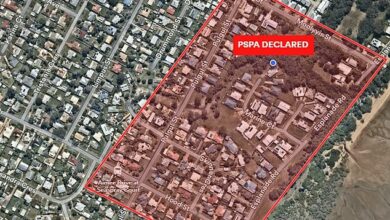The 5 Best and Worst Businesses to Start in Australia Right Now – and Anyone Can Do It

An insolvency expert has revealed the five best and worst businesses for Australians to start during a cost of living crisis.
Bankruptcies are now at their highest level in more than a decade, thanks to aggressive rate hikes, and more financial problems are expected.
The Reserve Bank left interest rates unchanged at 4.35 percent last month, the highest level in 12 years. But with inflation still high, there are concerns about further rate rises and slightly higher unemployment.
The cost of living crisis comes as ordinary Australians become increasingly dissatisfied as their wages fail to keep pace with rising prices.
Hays’ latest salary guide found that 73 percent of respondents are dissatisfied with their salary and do not feel their pay reflects their performance.
Hays CEO for Asia Pacific Matthew Dickason said the cost of living crisis had prompted many Australians to quit their jobs in search of a higher salary.
Some Australians will no doubt consider starting their own business as wages barely outpace inflation and are now back up to four per cent.
Matthew Caddy, a partner at specialist restructuring firm McGrathNicol with more than 25 years’ experience handling corporate insolvencies, told Daily Mail Australia that businesses can survive if they offer good value for money or a product that people need.

While supermarkets are thriving regardless of the economy, smaller, budget supermarkets could also weather the cost of living crisis, including Asian specialty stores
GOOD COMPANIES
1. Grocery stores
While supermarkets thrive regardless of the economy, smaller, cheaper supermarkets could also survive the cost of living crisis. This is also true for Asian specialty stores.
“Generally speaking, in times like these you see supermarkets selling well because more people are cooking at home rather than eating out,” Mr Caddy said.
“Any cheap option will do well in this environment.”
2. Tutoring
Demand for education remains the same, even as consumers have less money to spend, as parents continue to prioritize after-school classes for difficult subjects, such as math.
“There is a lot of demand for tutoring. Education has always been a priority for people and there is likely to be an increased demand for tutoring services. Post Covid, that will be through online platforms,” Mr Caddy said.
3. Waste collection
Waste management companies that collect waste for municipalities or place waste containers on construction sites are always needed, no matter how the economy evolves.
“They won’t see a spike in bankruptcies as the economy shrinks because waste services still need to do business,” Mr Caddy said.
4. Home care for the elderly

Baby boomers who want to spend their final years at home rather than in a nursing home will want more home care (photo is a stock photo)
Baby boomers who want to spend their final years at home rather than in a nursing home will want more help at home.
“As our population ages, demand will obviously increase and continue to increase over time. People in that sector have an opportunity to do well,” he said.
5. Farmers
Fruit, vegetable and meat growers are doing well regardless of their economic activity because people need food.
As a result, farmers are less likely to experience problems obtaining bank loans, even in times of drought or flooding.
“The conditions are quite good and it is also a sector that is probably viewed more favourably from a credit perspective,” Mr Caddy said.
BAD COMPANIES
1. Apartment builders
Apartment builders in particular are struggling as Australians prefer to live in houses as profit margins continue to fall.
“Most construction bankruptcies involve higher-density construction projects than land and construction developments,” Caddy said.
‘With such projects, the margins are very small and when demand falls, everyone has to compete for what is available and that squeezes margins even further.’
The construction sector was by far the hardest hit in Australia, with 2,832 companies going bust in the year to 16 June, according to data from the Australian Securities and Investments Commission, an increase of 33.7 per cent.
Fixed price contracts and higher costs for building materials are hampering builders despite Australia facing a housing shortage due to record high immigration.

Apartment builders in particular are struggling as Australians prefer to live in houses as developers struggle with declining margins (pictured is a construction site in Parramatta, Sydney)
2. Restaurants
Higher interest rates mean fewer Australians with a mortgage are eating out or ordering take-out.
“The hospitality sector is very much linked to discretionary spending and clearly to consumer demand as people tend to have less money in their pockets due to cost of living pressures,” Caddy said.
There were 1,576 bankruptcies in the hospitality sector, an increase of 49 percent.
3. Women’s fashion retailers
Womenswear retailers struggle when they are left with unsold inventory at the end of a season.
“If you sell fashion, you have to be able to switch between seasons,” he said.

Higher interest rates mean fewer Australians are eating out or getting takeout (stock photo below)
4. Mortgage advisors
The Royal Commission into Banking led to new regulations and caused many mortgage advisers to leave the sector.
“The regulations are adding cost. If you’re a smaller company, you can’t necessarily adapt and comply,” Mr Caddy said.
5. Specialized manufacturers
Australia’s higher labour costs compared to Asia pose a threat to niche technology manufacturers that make components for items such as fishing rods and bicycles.
“Carbon fibre is produced in Australia, where labour costs are very high. In parts of Asia, the focus is on producing it. Labour costs are much lower there,” he said.




